Paint and pour is a trending new painting technique. Learn how to do pour painting with these two unique craft ideas!
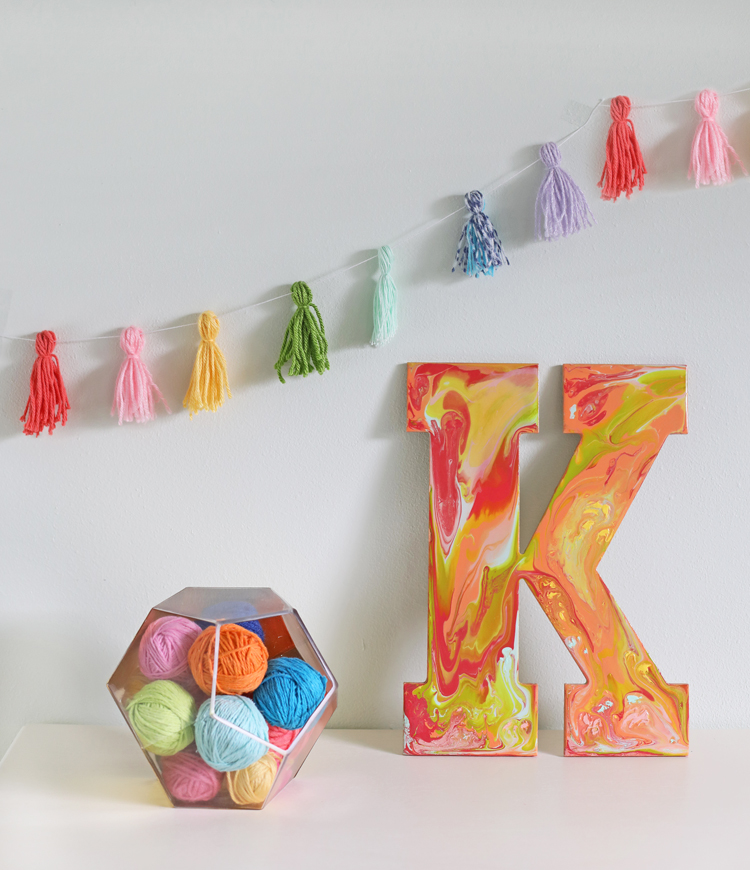
Paint and Pour art is all over the internet and I have been dying to try it. I love the idea that every new pour is a one-of-a-kind creation that can never be duplicated. Have you been wanting to try pour painting too? I learned all about it and am going to show you exactly how you can do your own acrylic pour painting.
This post is made possible by my generous sponsors at Hobby Lobby.
What is paint pouring?
Instead of using a brush to paint a surface, you let gravity do the work for you by pouring the paint on and letting it move and swirl and spread on its own. Paint pouring creates really interesting patterns and designs and every new project yields cool, unique results.
To paint and pour, you will need the following supplies:
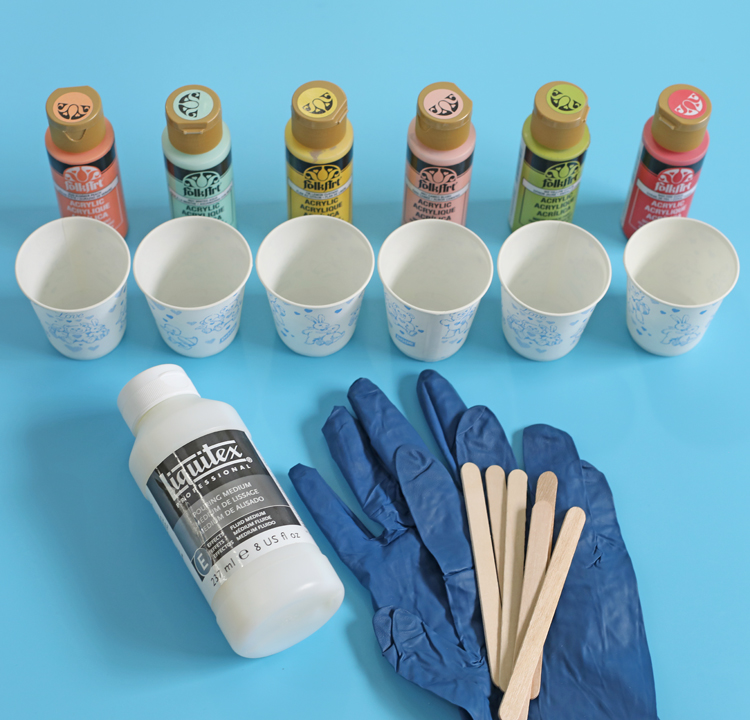
- Acrylic Craft Paint
- Liquitex Pouring Medium
- Small Paper Cups
- Stir Sticks
- Rubber Gloves
What is pouring medium?
Pouring medium is a special clear liquid that extends the drying time of paint. When mixed with acrylic paint, it allows the paint time to spread out and swirl together without drying right away. It also helps prevent paint colors from blending together. After 24 hours, acrylic paint mixed with a pouring medium dries into a hard, glossy finish.
You can find the pouring medium I used in the fine art aisle at Hobby Lobby.
Want to see paint pouring in action? Of course you do!
This video will show you how I used the paint and pour technique to decorate a wooden initial.
Isn’t that amazing? Here’s a close-up so you can see the sheen.
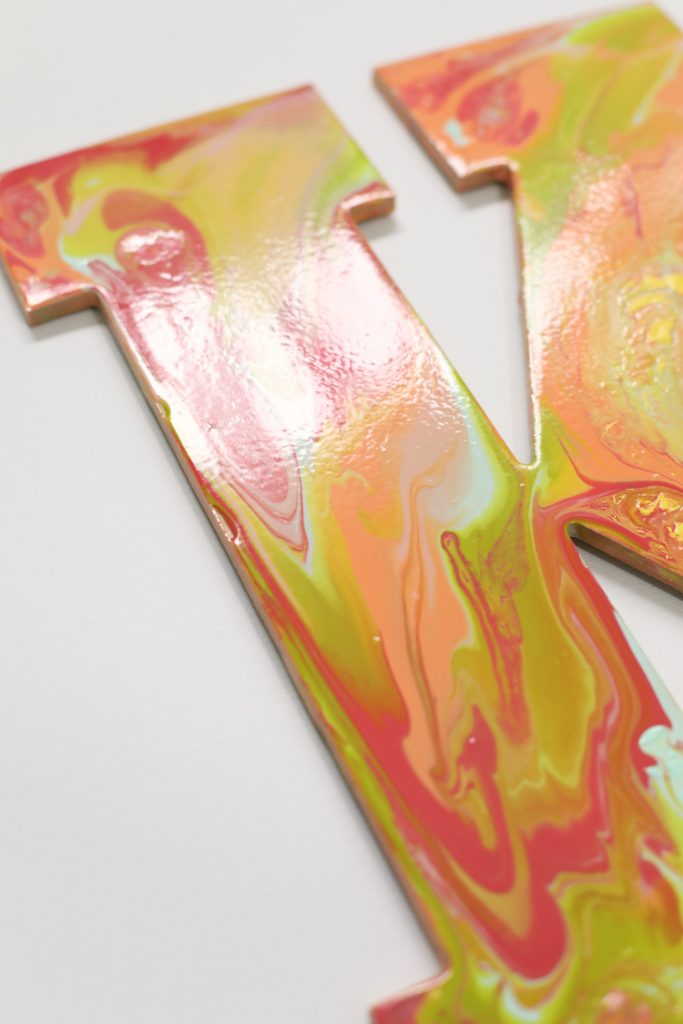
Another awesome technique for paint pouring is called a “dirty pour.” That just means that you layer all of your paint colors into one cup and pour it at the same time. I tried this technique on a clay pot.
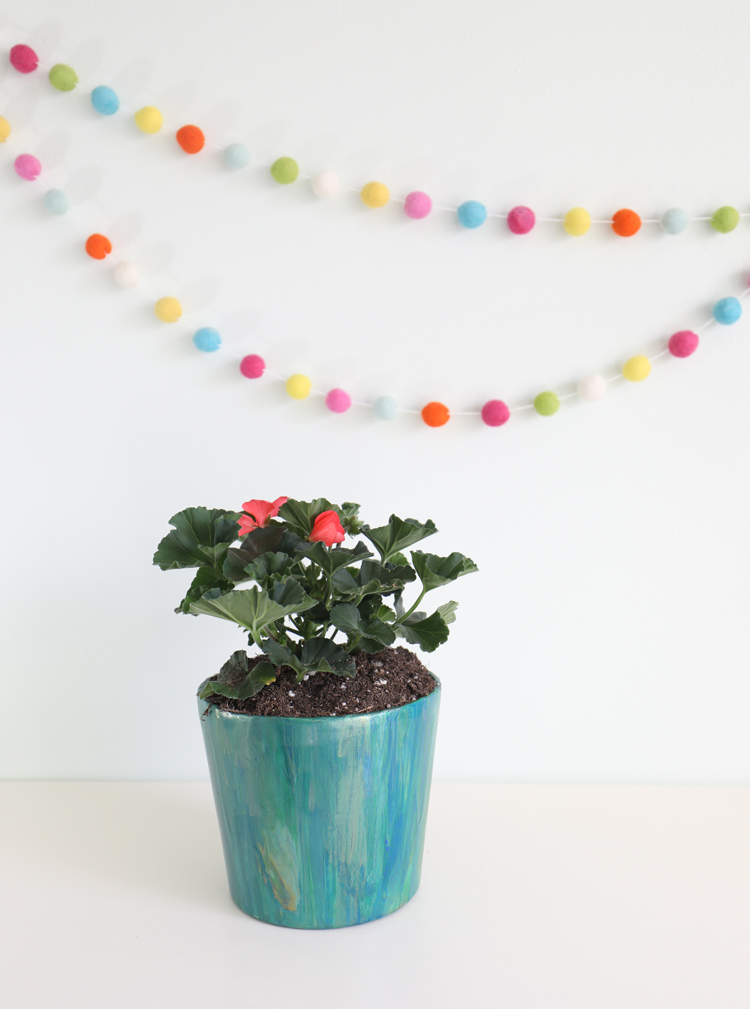
I used green, blue, turquoise and gold paint mixed with pouring medium and layered all four colors into a larger cup. This video shows exactly what I did:
Painting on a 3D object was definitely more difficult. The paint wanted to just run right off the sides of the pot. I had to use my gloved fingers to fill in a few spots that didn’t get enough paint to cover. After the pot was completely covered, I kept running my finger around the open edge of the pot to keep it clear from drips.
Now that I’ve had some experience with paint pouring, I definitely have some “live and learn” advice to share with you.
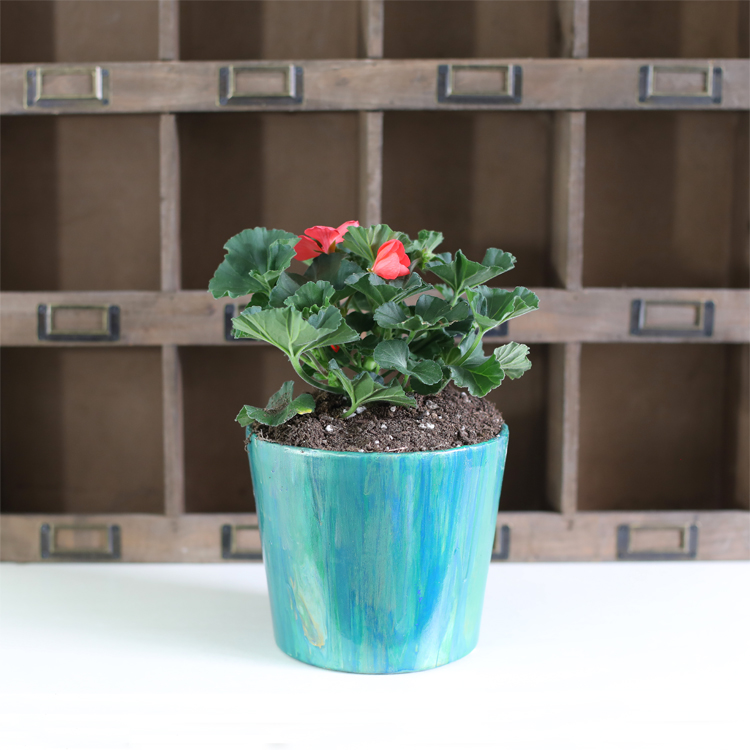
Paint Pouring Tips for Beginners
- Wear rubber gloves while painting. The pouring medium may agitate sensitive skin.
- Mix, mix, mix! I had a few paint blobs that didn’t get mixed well into the pouring medium and they looked kind of chunky on the finished surface.
- You’ll probably need more paint than you think you will. One 8 ounce bottle of pouring medium was barely enough for me to do these two projects.
- Let gravity do the designing as much as possible. The more you interfere, the more muddled the final project will be. Do like Elsa and just let it go.
- If it’s your first time paint pouring, I suggest pouring onto a flat surface like a canvas or sign.
- Start with fewer colors that are next to each other on the color wheel. I like how my letter turned out, but I may have gone a little color happy. If I had just done pinks, oranges and yellows I think it would have turned out better. This is personal opinion of course, so do what you want!
- Use a giant piece of cardboard as your work surface. The drips can get out of control and I’m glad I could just chuck the cardboard afterwards.
- Prop the item you’re painting up off the cardboard so the paint can freely drip off the sides. I used painters triangles and they worked perfectly.
- Clean pouring (pouring colors straight from individual cups) would have worked better on the 3D surface. I would have had more variation in color.
- Dirty pouring (layering the colors into one cup) would have worked better for the flat surface.
- Let the project dry for a full 24 hours before touching it or you may mess up the design.
So after reading through this article, do you think you can do it? What surface are you wanting to pour? Do you want to try clean or dirty pouring? Leave me a comment or send me a DM on social media and let me know if you give pour painting a try!

Comments & Reviews
how much liquitex do you use?
I would like to try this on canvas.
What is the measured ratio of the paint to the pouring medium?
I can’t remember, but it says on the bottle.